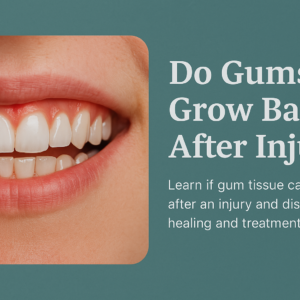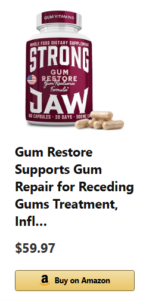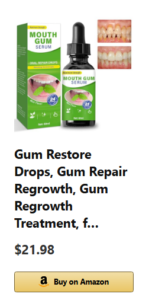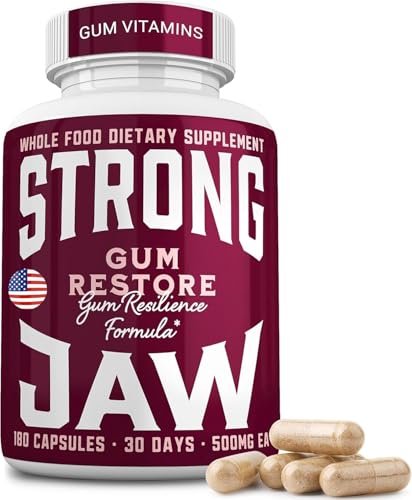Do Gums Grow Back After Injury: Gum injuries are more common than many realize. Whether caused by aggressive brushing, trauma, or dental procedures, the damage to gum tissue often raises an important question: Do gums grow back after injury? While the body has an incredible ability to heal, gum tissue behaves differently than skin or muscle.
This article explores whether gums can regenerate after an injury, the science behind gum healing, and what treatments are available. We’ll refer to trusted sources such as the NIH, ADA, and academic institutions to ensure the information is evidence-based and reliable.
Understanding Gum Tissue and Its Role
Before exploring healing, it’s important to understand the function of gum tissue. The gums (gingiva) protect the roots of the teeth and the underlying bone. They serve as a barrier against bacteria, trauma, and plaque. When injured, this delicate tissue becomes vulnerable to infection and further complications.
According to the National Institute of Dental and Craniofacial Research (NIDCR) (nidcr.nih.gov), healthy gums are essential for overall oral health. Maintaining the integrity of gum tissue is critical not just for aesthetics, but also for preventing tooth loss and periodontal disease.
Do Gums Grow Back After Injury?
Natural Healing vs. Regeneration
So, do gums grow back after injury naturally? The answer depends on the severity and type of injury.
- Minor injuries (such as brushing too hard or flossing abrasively) may lead to temporary recession, inflammation, or small cuts. These can heal naturally over time, as the gums reattach to the tooth surface.
- Moderate to severe injuries—especially those that result in tissue loss—do not typically grow back completely on their own. The gum tissue is non-regenerative in the way skin or liver tissue is.
As per research published by the National Institutes of Health (NIH.gov), epithelial tissue (like gums) has a limited regenerative capacity, meaning new tissue formation is minimal without intervention.
Healing Timeline After Gum Injury
Every injury is different. However, understanding the general timeline helps set realistic expectations:
- 24–72 hours: Initial inflammation, swelling, and pain.
- 3–7 days: Scab formation and early healing (for minor cuts or trauma).
- 1–2 weeks: Reduced redness, new cell growth, and closure of minor wounds.
- 2–4 weeks: Gums may fully reattach if no recession has occurred.
During this period, hygiene, nutrition, and avoiding further irritation significantly influence recovery. If healing is delayed or if recession worsens, a professional evaluation is essential.
Causes of Gum Injury
Identifying the cause is vital because it determines whether the gum damage is likely to return or worsen. Common causes include:
- Aggressive brushing or flossing
- Poorly fitted dental appliances
- Trauma (sports or accidents)
- Gum disease
- Teeth grinding or clenching
- Dental procedures
Understanding the root cause allows patients to prevent future damage. The American Dental Association (ADA.org) recommends using soft-bristled toothbrushes and proper technique to avoid injury.
Can Gum Tissue Be Regrown Medically? Do Gums Grow Back After Injury
 While gums don’t regenerate naturally after significant damage, modern dentistry offers several treatments to restore or reconstruct gum tissue.
While gums don’t regenerate naturally after significant damage, modern dentistry offers several treatments to restore or reconstruct gum tissue.
1. Tissue Grafting Procedures
Gum grafts are the most reliable method for replacing lost gum tissue. In this procedure, tissue is taken from the roof of the mouth or a donor source and attached to the damaged area.
- Helps cover exposed roots
- Reduces tooth sensitivity
- Improves appearance
- Supported by evidence from the American Academy of Periodontology (perio.org)
2. Guided Tissue Regeneration (GTR)
This technique uses biocompatible membranes to encourage the body to rebuild bone and gum tissue in damaged areas.
- Typically used in cases of periodontal disease
- Must be done by a periodontist
- Often combined with bone grafts
3. Pinhole Surgical Technique
This minimally invasive treatment involves creating a small hole in the gum and loosening the tissue to reposition it over exposed areas.
- Fast recovery time
- No incisions or sutures
- Suitable for multiple teeth
Home Remedies to Support Gum Healing
 While home remedies cannot regenerate lost gum tissue, they can support the healing process after a minor injury and prevent further damage.
While home remedies cannot regenerate lost gum tissue, they can support the healing process after a minor injury and prevent further damage.
Salt Water Rinse
Salt water helps disinfect and soothe minor gum wounds. Mix 1/2 teaspoon of salt in a cup of warm water and rinse gently twice daily.
Aloe Vera Gel
Natural aloe vera has anti-inflammatory and antimicrobial properties. It may reduce swelling and speed up the healing process.
Turmeric Paste
Turmeric contains curcumin, known for its antibacterial and healing effects. Apply a small amount directly to the injured gum area.
Green Tea
A study by the NIH highlighted green tea’s role in reducing inflammation and improving gum health due to its antioxidants.
However, it’s important to note that home remedies should never replace professional care, especially for severe or persistent gum issues.
Tips to Prevent Future Do Gums Grow Back After Injury
Prevention is crucial, especially since gums don’t regenerate easily. The following habits can help:
- Use a soft-bristled toothbrush
- Avoid overbrushing or using abrasive toothpaste
- Floss gently and regularly
- Visit the dentist twice a year
- Wear a mouthguard if playing contact sports
- Address grinding with a night guard if needed
By taking these steps, you can maintain healthy gums and reduce the likelihood of future injuries.
When to See a Dentist or Periodontist
Not every gum injury requires professional intervention. But you should seek dental care if:
- The gum injury is accompanied by bleeding that won’t stop
- The area becomes increasingly painful or swollen
- Pus or discharge appears (indicating infection)
- The gums appear to recede
- Healing takes longer than two weeks
Dentists can evaluate the severity and recommend the most effective treatment. In many cases, early intervention prevents irreversible damage.
What the Research Says
 To understand more about gum healing, let’s look at what the experts say:
To understand more about gum healing, let’s look at what the experts say:
- A MedlinePlus.gov article emphasizes the importance of maintaining oral hygiene for faster gum recovery.
- The University of Michigan School of Dentistry (umich.edu) has published research showing that regenerative procedures combined with good oral hygiene result in better long-term gum health.
- According to the NIH, ongoing periodontal care is crucial for managing gum trauma and preventing long-term tissue loss.
These findings underscore the importance of both professional care and personal habits in gum healing.
Conclusion: Do Gums Grow Back After Injury?
To conclude, gums do not fully grow back after injury, especially when tissue is lost. However, minor damage may heal naturally, and medical treatments like gum grafts and guided regeneration can restore gum appearance and function.
With proper care, you can support your gums in healing after minor injuries. But for more serious damage, consulting a dentist or periodontist ensures you get the best outcome.
References: Do Gums Grow Back After Injury



